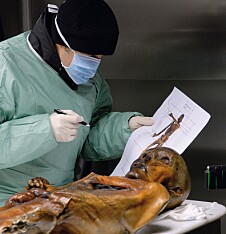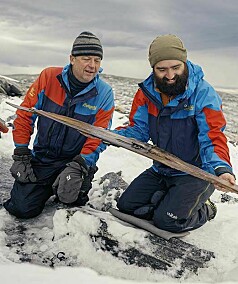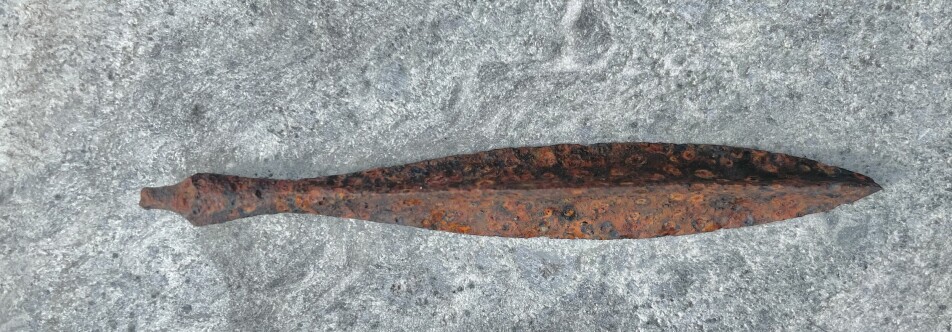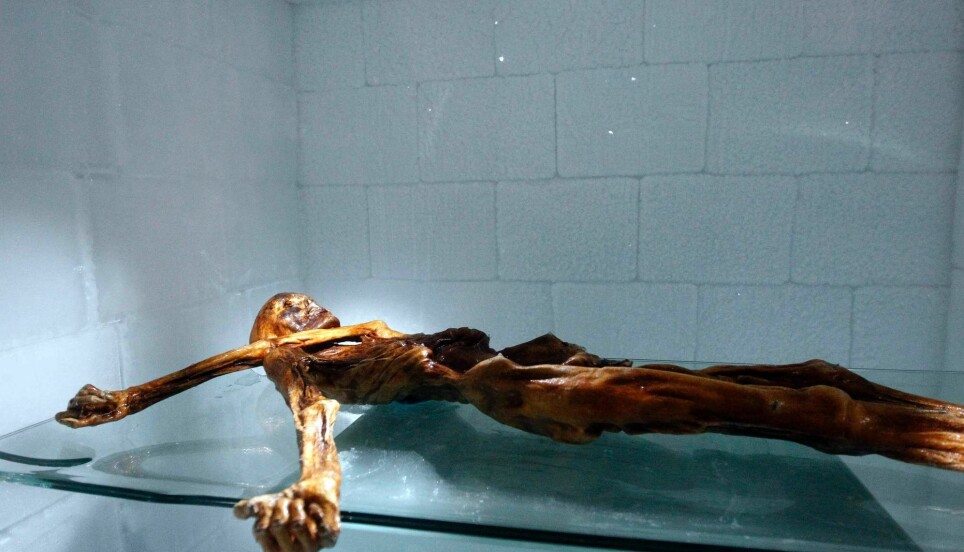
Ötzi-museum does not believe there are so many more ice mummies out there
What happens to artifacts in ice patches in the Norwegian mountains is not necessarily transferable to the Alps and the Ötzi-find-site, according to Andreas Putzer from the South Tyrol Museum of Archaeology.
A new study on Ötzi the Iceman, published earlier this week, claimed that while Ötzi is an exceptional find, the circumstances of the find and the preservation of his body are not.
A string of miracles is not needed to explain the case of Ötzi, glacial archaeologist Lars Pilø said to sciencenorway.no.
“Ötzi was preserved by regular natural processes,” he said.
The new study claims for instance that Ötzi did not die in the gully where he was found, that there was no sudden climatic cooling that led to his sudden freeze and subsequent preservation, and that there was no moving glacier above Ötzi, but rather that he was preserved in stationary ancient cold ice.
“I think that there is nothing new in this paper,” Andreas Putzer says to sciencenorway.no.
He is part of the scientific staff at the Ötzi-museum, also known as the South Tyrol Museum of Archaeology in Bolzano in Italy.
But he does find parts of the conclusions rather controversial.
“Obviously it’s controversial, because they suppose that the Iceman died outside of the gully, and that processes of ice melting brought him to the gully where he was found. We don’t think it happened in this way,” Putzer states.
He definitely died in the gully
According to the original interpretations of the find, Ötzi died in the gully where he was found. Putzer believes two factors support this theory strongly:
The way the artifacts were placed suggest that they were placed there by the Iceman.
“The bow of the Iceman was in a vertical position, and some artifacts were laying intentionally on a rock, so it’s quite unbelievable that processes of ice melting brought them there,” says Putzer.
And there’s a rock in the way.
“If you know the find spot well you see that this theory is impossible. There was a rock above the gully that would have stopped the body from falling into the gully,” Putzer says.
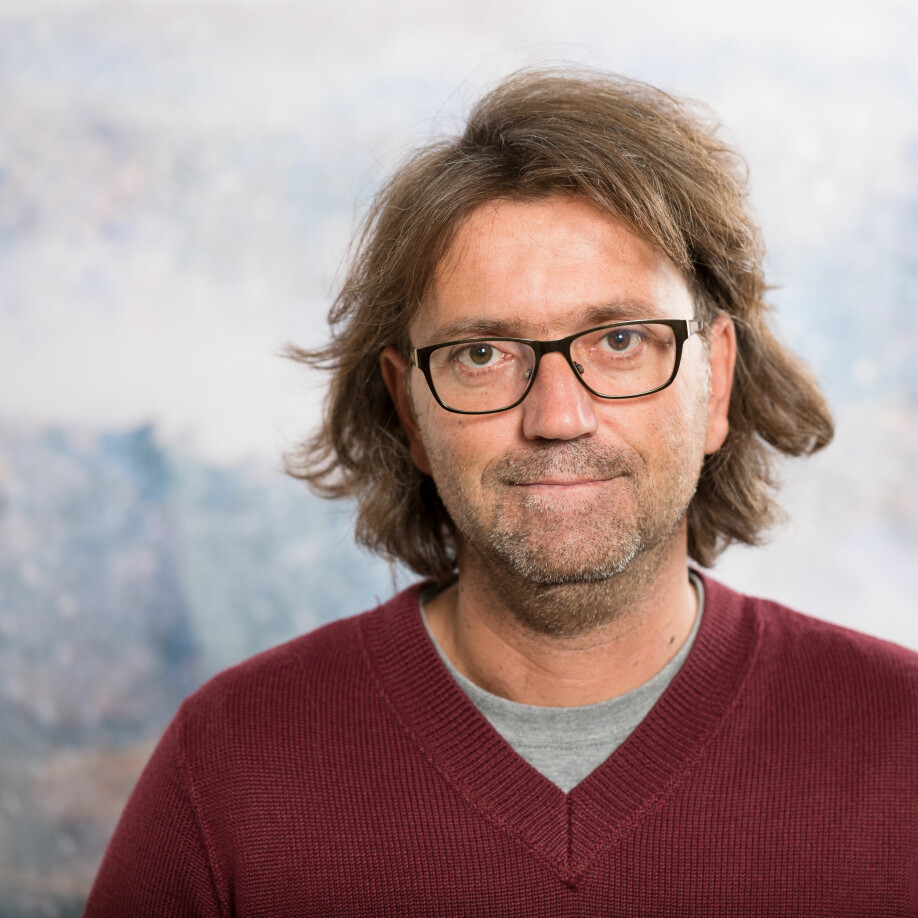
Norwegian mountains are not the Alps
Putzer agrees that the artifacts may have been damaged by the pressure of the ice.
“Ice has an impact on the conservation, on this I agree,” he says. “They did good work in this find spot in Norway and show what can happen with destroyed artifacts.”
The new study also finds that Ötzi was found in an ice patch – ancient ice that does not move – rather than lying protected in the gully under a moving glacier.
“Yes, it could be an ice patch,” Putzer says.
“I’m not a glaciologist, it could be an ice patch and no moving ice, I cannot say if they are right or wrong. But it doesn’t change the situation of the Iceman,” he holds.
“The only new aspect in this study is the theory that objects were not found in their original position, and we agree only in part to this. The mummy probably didn’t die exactly where he was found, but closer to his objects. But he was not above the gully, and he did not die far away from the gully. This is what we think,” Putzer says.
Transferring knowledge from the Norwegian find sites to the Ötzi-site is problematic, according to the conservator.
“It’s not so easy to transfer the experience from one find spot to another, especially if you have never seen the find spot,” he says.

We’ve known this since the 90s
That the Iceman has been immersed in water is also not new – but the museum and the new study differ in opinion on when this happened.
The new study suggests that Ötzi melted in and out of the ice during the first 1500 years. And that he was not frozen immediately due to a sudden climatic cooling.
“The climatic cooling, it’s difficult to say – but he was not eaten by animals, not even flies deposited eggs in his body. And that is why we suppose that he must have been covered early by snow. There was a change in climate,” Putzer says.
Also: “We’ve known since the 90s that he was lying in water at one point, that’s why he lost all his hair and his nails,” Putzer says.
“We don’t know exactly when this happened, but there are two warm periods after the death of the Iceman, the first around 1500 BC and the second during roman age,” he explains.
Don’t hold your breath for more ice mummies
And finally, Andreas Putzer does not believe that there are many more Ötzis out there.
“We find human bodies only if there has been an accident, or if somebody was killed as is the case with Ötzi. These people would otherwise have survived crossing the ice and the glacier. Humans mostly survived crossing the glaciers in the Alps,” he says. “So I don’t think we will find so many ice mummies in the future.”
Putzer says that when new knowledge has occurred, the museum has changed their exhibition.
“I saw that somebody wrote that this new research means we have to change the way the story is told. We don’t agree to this. We are well updated, and this new research does not need to be introduced into the exhibition,” he says. “But we are very open to colleagues and theories – these researchers should contact us, and maybe in the future we can do something together.”
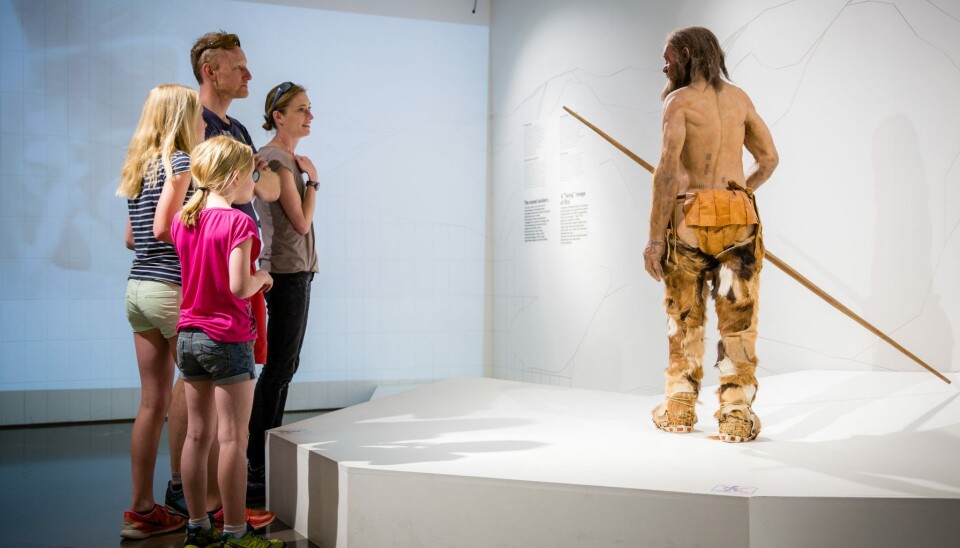
New theories always meet resistance
Lars Pilø, one of the glacial archaeologists behind the new study, isn’t altogether too surprised by the response from the Ötzi-museum.
“When new scientific evidence and theories occur, there will always be resistance. So we’ll just have to wait and see about how the scientific discourse develops in the future, if viewpoints will change, eventually,” he says.
He finds the insistence that Ötzi died where he was found odd.
“What we write is that the ice melts, and then things move. Ötzi could have been right above the gully, and melted into it, nothing wrong with suggesting that,” Pilø says."But it puzzles me that they insist he must have died down there in the gully, and that the things were found as they once were placed by him. We've known for a while through previously published research that this could not be."
Pilø refers to research which has established that Ötzi died during spring or summer – when the mountains would have been full of snow.
“You cannot die in a gully if it is filled with snow,” he says. “And it’s not like when we find artifacts on glacial sites, they were placed exactly there by somebody. They’ve always been moved around by forces of nature, in one way or another.”
Natural processes the same across sites
Pilø also disagrees that it is problematic to compare find sites.
“We refer to other pass sites in the Alps, and one of the sites that we refer to in Norway, Lendbreen, is also a mountain pass, just like Tisenjoch where Ötzi was found,” he says. “Most of the natural processes on glacial archaeological sites are the same across sites, regions, and continents. The Ötzi site is very well documented and published, so it is quite possible to have an informed opinion of it without having been there.”
That Ötzi might have melted out of the ice at a later date is also mentioned in the article, Pilø says.
“Even Konrad Spindler mentioned this in a posthumously published paper in 2009. What is new, is that we combine the radiocarbon dates from the bottom of the gully with the stratigraphy in the gully to show when it must have opened up.
“It’s also interesting that the museum agrees that the damage to the items may come from ice pressure, that’s a point that hasn’t been much discussed elsewhere,” Pilø says.
He finds it odd that Putzer is not more interested in the type of ice Ötzi was frozen in.
“The nature of the ice at the site is of major importance to understand the natural processes affecting the find, so I respectfully disagree that it does not change the situation of the Iceman”
Time will tell
The feedback has so far been mostly positive, Pilø says. A few scientists have commented that their teaching about Ötzi needs to change after the publication of the new study.
“It seems the museum is mostly sticking with the old story, and that’s OK. Then time will tell how the knowledge on Ötzi develops,” Pilø says.
And he maintains that there is a chance of new mummy discoveries in the future.
“They already found a human bone in a mountain pass nearby where Ötzi was found, so it’s not like people have not died in these mountain passes,” he says. “Ötzi is of course a rare and unique find. Our point was to show that it was not the result of extraordinary circumstances.”
------








